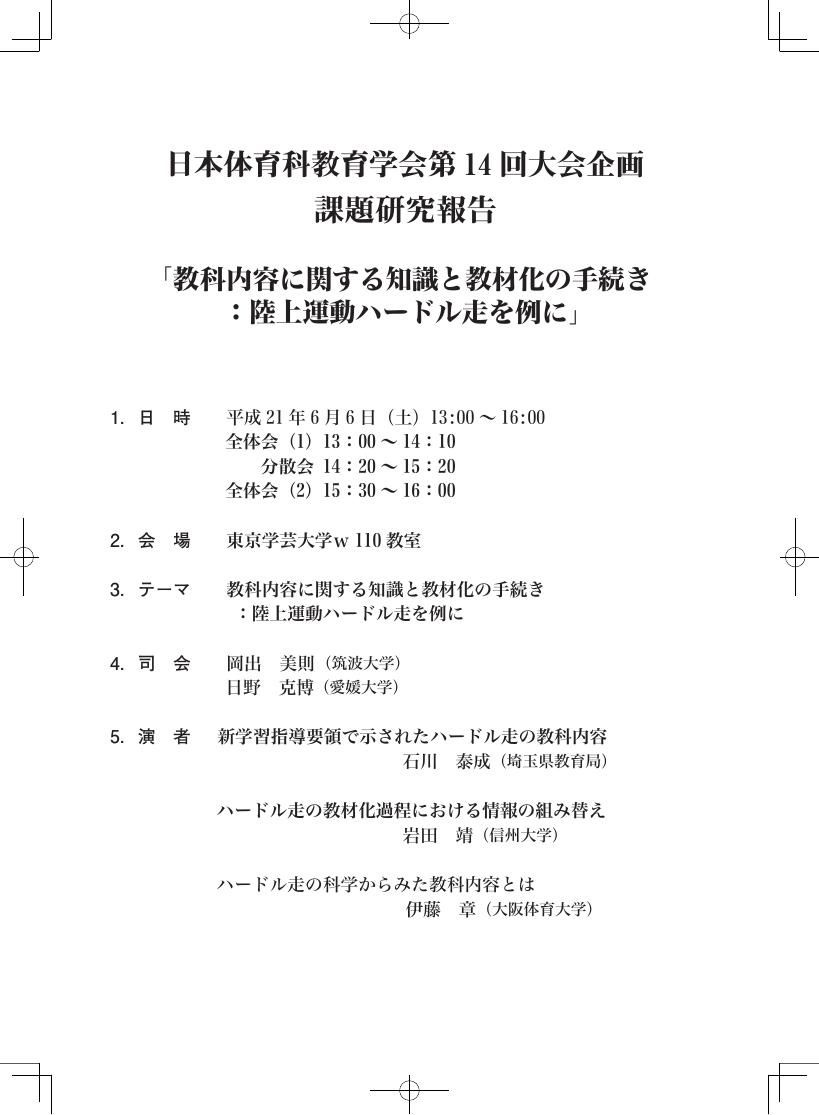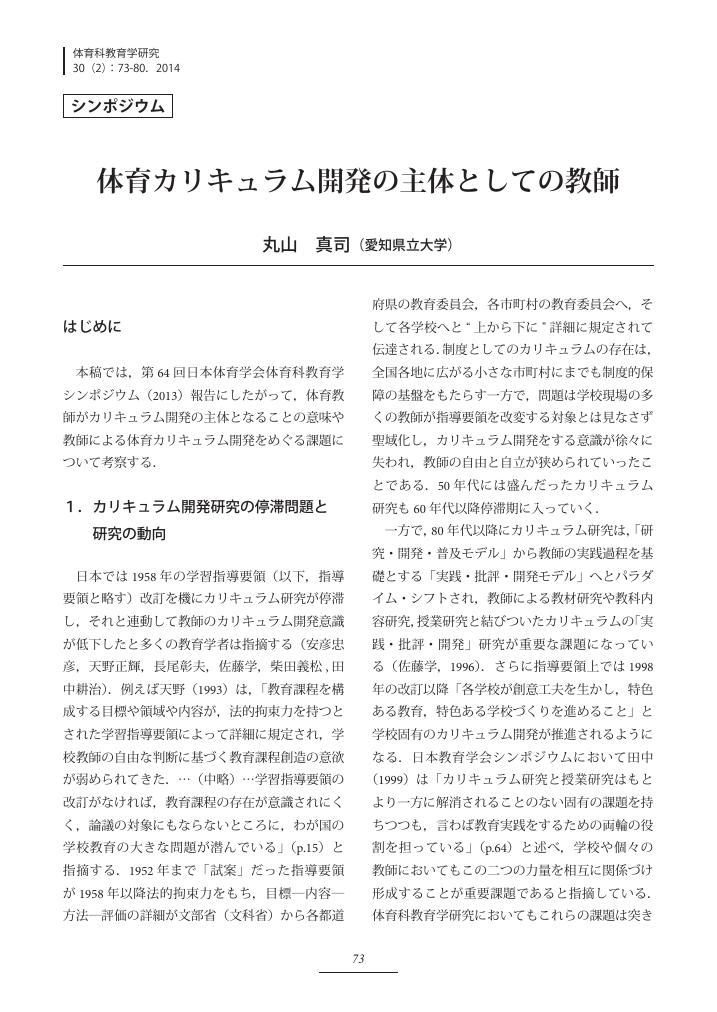1 0 0 0 OA 日本体育科教育第14 回大会企画 課題研究報告
1 0 0 0 OA スポーツバイオメカニクスから得たハードル走の新しい指導法の有効性の検討
- 著者
- 大塚 光雄 伊藤 美智子 伊藤 章
- 出版者
- 日本体育科教育学会
- 雑誌
- 体育科教育学研究 (ISSN:13428039)
- 巻号頁・発行日
- vol.27, no.1, pp.1-18, 2011-03-25 (Released:2013-03-26)
- 参考文献数
- 38
The effects of two methods of teaching elementary school 6th graders in a hurdle class were compared in the present study. One is a new teaching method which emphasizes jump over hurdles high and long. The other is a general teaching method which emphasizes hurdle clearance movement. The former refers to jumping over hurdles, trailing the back leg parallel to the trunk and to run in a three-stride rhythm. This method was used in experimental group (13 boys and 8 girls). The latter refers to stepping over the hurdles as low as possible, trailing the back leg parallel to the ground and to run in a three-stride rhythm if students can. This method was used in control group (13 boys and 8 girls). Each class comprised 6 days. The effects were assessed as pre- and post-test performance in 40-meter hurdle races filmed with six cameras. We analyzed measurement items in hurdling and interval run movements and time required to finish the race. The main findings were as follows. 1) All of the students in experimental group (p< 0.001) and 80% students in control group (p< 0.05) improved hurdle records in the post-test. 2) Post-test hurdling velocity in both groups significantly increased, while interval run velocity significantly increased in the experimental group. 3) Both hurdling and take-off distances significantly increased in the experimental group in the post-test. 4) Post-test hurdle clearance time in the control group significantly decreased. These findings suggested that the new method of teaching is effective in improving all of their hurdle records, and fundamental ability to repeat run and jump in turn without hitting hurdles.
1 0 0 0 OA ボールゲームの課題解決過程の基礎的検討
- 著者
- 鈴木 理 廣瀬 勝弘 土田 了輔 鈴木 直樹
- 出版者
- 日本体育科教育学会
- 雑誌
- 体育科教育学研究 (ISSN:13428039)
- 巻号頁・発行日
- vol.24, no.1, pp.1-11, 2008-03-10 (Released:2012-09-24)
- 参考文献数
- 18
The essential component of ball games is competition for the uncertain outcome. Clarifying the structure of the games with the viewpoint of players, this article argues for a theoretical framework to grasp the relations among the objective of competition, the task of competition, and the method selected for task-solving.Although there are several types of ball games, all of them include one of two distinct objectives: ballprogressing to an objective point or movement of an individual player to an objective point. Ball or player progression is accomplished through conflicts between offense and defense or the activity of an individual player.Considering these elements, the process of task-solving can be classified into four types: “target-shooting”, “breakthrough”, “breakthrough ± target-shooting”, and “breakthrough ± base-advance”. Each type of task-solving reveals a fundamental learning content of the game. Furthermore, based on the layered structure of defensive interface and the selected method of ball- progressing corresponding to that structure, several types of confrontation between offense and defense can be distinguished: “separation”, “confusion”, “cross-border”, and “alternation”.Those findings promote curricular conversion from “athletic event priority” to “learning contents priority” in teaching ball games.
1 0 0 0 OA 体育カリキュラム開発の主体としての教師
- 著者
- 丸山 真司
- 出版者
- 日本体育科教育学会
- 雑誌
- 体育科教育学研究 (ISSN:13428039)
- 巻号頁・発行日
- vol.30, no.2, pp.73-80, 2014-07-20 (Released:2014-08-02)
- 参考文献数
- 21
1 0 0 0 OA Retraction: 小学校低学年における投能力向上のための教具開発の試み
- 著者
- 塙 佐敏
- 出版者
- 日本体育科教育学会
- 雑誌
- 体育科教育学研究 (ISSN:13428039)
- 巻号頁・発行日
- vol.26, no.2, pp.17-26, 2010-06-20 (Released:2013-03-26)
- 参考文献数
- 25
平成 22 年 10 月 20 日付けで刊行されました『体育科教育学研究』(第 26 巻第 2 号)の掲載論文中に投稿規定 4.1に抵触した論文がみられましたので,下記掲載論文の取り消し及び『体育科教育学研究』(第26 巻第 2号)における当該論文の無効をお知らせ致します.
- 著者
- 原田 奈名子
- 出版者
- 日本体育科教育学会
- 雑誌
- 体育科教育学研究 (ISSN:13428039)
- 巻号頁・発行日
- vol.32, no.1, pp.36-36, 2016

